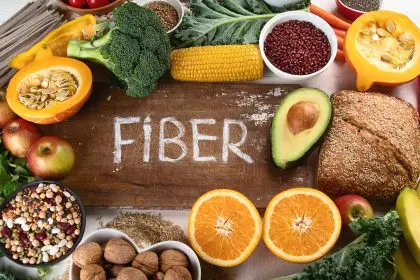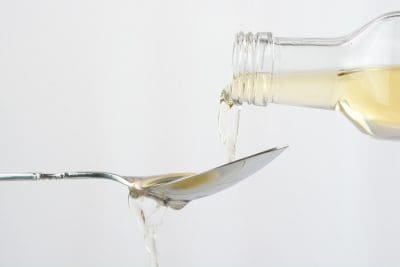Water might seem like the most ordinary substance in your daily routine, but this humble liquid holds remarkable potential for those struggling with weight management. While fancy detox programs and expensive supplements dominate health headlines, many overlook the profound impact proper hydration can have on achieving and maintaining healthy body weight. Research increasingly points to water as a cornerstone element in effective weight management strategies.
Why your body craves proper hydration
The human body consists of approximately 60% water, with this essential liquid playing crucial roles in virtually every bodily function. Beyond basic survival, water serves as the primary medium for nutrient transport, temperature regulation, joint lubrication, and waste elimination. These fundamental processes directly impact metabolic efficiency and energy utilization.
Dehydration, even in mild forms, compromises these essential functions. When water levels drop below optimal ranges, the body prioritizes vital organ function over metabolic efficiency, potentially slowing calorie-burning processes. Many people live in a state of chronic mild dehydration without recognizing its effects on energy levels, hunger signals, and metabolic rate.
The brain’s hypothalamus regulates both thirst and hunger mechanisms through closely related pathways. This proximity sometimes creates confusion between hunger and thirst signals, leading to unnecessary calorie consumption when the body actually needs hydration. Learning to distinguish between these sensations can prevent unnecessary snacking triggered by dehydration rather than genuine nutritional needs.
The 8 powerful ways water supports weight management
Understanding water’s multifaceted role in weight control reveals why proper hydration deserves priority in any effective weight management strategy.
- Water naturally suppresses appetite before meals
Consuming 16-20 ounces of water approximately 30 minutes before eating significantly reduces calorie intake during subsequent meals. This pre-meal hydration strategy works through several mechanisms, including stomach distension that triggers fullness signals and priming digestive processes for optimal nutrient processing.
The effect proves particularly powerful during breakfast, when many people experience dehydration after overnight fluid losses. A morning glass of water before eating helps reset hydration levels while establishing better appetite control for the entire day. This simple habit requires minimal effort yet yields consistent benefits for portion control.
The temperature of pre-meal water may further enhance its effectiveness. Some research indicates that cold water requires additional energy expenditure as the body warms it to body temperature, potentially providing a minor metabolic boost alongside appetite suppression benefits.
- Hydration accelerates metabolic processes
Proper water intake supports efficient metabolism through multiple pathways. The body requires adequate hydration to process carbohydrates and fat effectively, with water serving as both a medium for biochemical reactions and a transportation system for removing metabolic byproducts.
Research demonstrates that drinking 500ml (approximately 17 ounces) of water temporarily increases resting energy expenditure by 24-30% for about an hour. While this boost appears modest in isolation, the cumulative effect across multiple daily hydration sessions contributes meaningfully to overall calorie expenditure.
The liver plays a central role in this relationship between hydration and metabolism. When properly hydrated, this vital organ efficiently converts stored fat into usable energy. Dehydration forces the kidneys to relinquish some filtration responsibilities to the liver, reducing its capacity for optimal fat metabolism and potentially slowing weight loss progress.
- Water replaces calorie-dense beverages
Simple substitution of water for caloric beverages represents one of the most straightforward yet effective dietary changes for weight management. Many adults consume hundreds of daily liquid calories through sodas, specialty coffees, alcoholic beverages, and juice drinks without the satiety benefits solid foods provide.
A standard 12-ounce soda contains approximately 140 calories and 39 grams of sugar. Replacing just one daily soda with water creates a 51,100-calorie annual deficit—potentially translating to over 14 pounds of weight difference without any other dietary changes. This calculation demonstrates how seemingly minor beverage choices create substantial long-term impacts.
Beyond direct calorie reduction, eliminating sugary beverages helps stabilize blood glucose levels and insulin response. This stabilization reduces craving cycles that often lead to additional unnecessary eating, creating a compounding benefit beyond the immediate calorie savings.
- Proper hydration enhances exercise performance
Water plays a fundamental role in physical activity, with even minor dehydration significantly reducing exercise capacity and performance. Muscles require adequate hydration to function optimally, with water facilitating nutrient delivery and waste removal during exertion.
During exercise, water helps regulate body temperature through perspiration, preventing overheating that would otherwise prematurely terminate workouts. This temperature regulation allows for longer, more effective exercise sessions that support weight management through increased calorie expenditure.
Hydration also supports joint lubrication and reduces exercise-related discomfort, allowing for more consistent training routines. This comfort factor improves adherence to physical activity programs—a critical component for sustainable weight management success that often receives insufficient attention in weight loss discussions.
- Kidney function improves with adequate water
The kidneys filter approximately 120-150 quarts of blood daily, removing waste products and excess fluid. This filtration process requires adequate water to function efficiently. When hydration falls below optimal levels, kidney function becomes compromised, creating a cascade of metabolic consequences.
Well-hydrated kidneys effectively eliminate waste products, including those generated during fat metabolism. This efficient elimination supports ongoing fat utilization and prevents the buildup of metabolic byproducts that might otherwise slow weight loss progress.
The connection between kidney function and liver efficiency creates another pathway for hydration to support weight management. When kidneys receive sufficient water for optimal function, the liver can fully focus on its metabolic responsibilities rather than assisting with filtration tasks, maximizing fat-processing capabilities.
- Digestive efficiency depends on water intake
Proper digestion requires adequate fluid to break down food particles and transport nutrients through the intestinal walls. Insufficient hydration can slow digestive processes, potentially reducing nutrient absorption efficiency and creating feelings of heaviness or bloating after meals.
Water supports the mucosal lining of the digestive tract, maintaining the integrity of this crucial barrier. A well-hydrated digestive system more effectively processes food and eliminates waste products, supporting overall metabolic function and preventing constipation that might otherwise create discomfort and bloating.
Fiber, an essential component for weight management through its satiety and blood sugar stabilization effects, requires sufficient water to function properly. Without adequate hydration, high-fiber diets may actually create digestive discomfort rather than their intended benefits, highlighting water’s role as an essential partner to dietary improvements.
- Cellular processes function better with hydration
At the cellular level, water facilitates countless biochemical reactions necessary for energy production and nutrient utilization. Every cell in the body requires proper hydration to maintain membrane integrity and internal function, with even slight dehydration potentially compromising cellular efficiency.
Lipolysis—the breakdown of fat stores into usable energy—depends on adequate cellular hydration. This process requires water molecules at multiple stages, explaining why dehydration can significantly impair the body’s ability to utilize stored fat effectively during calorie deficits.
Cellular communication systems also function optimally only with proper hydration, ensuring appropriate hormonal signaling for hunger, satiety, and energy regulation. This communication network forms the foundation for metabolic processes that support weight management goals.
- Water helps reduce water retention paradoxically
Perhaps counterintuitively, maintaining adequate hydration actually helps prevent water retention and bloating. When the body senses insufficient water intake, survival mechanisms trigger fluid retention to preserve essential functions—creating visible bloating and temporary weight gain.
Consistent, appropriate water consumption signals to the body that fluid resources remain plentiful, allowing natural release of stored water. This process explains why individuals who increase water intake often experience a reduction in bloating and water weight within days of improving hydration habits.
Sodium balance plays a crucial role in this relationship, with proper hydration helping the body maintain appropriate electrolyte levels that further reduce unnecessary fluid retention. This connection explains why proper hydration proves particularly important when consuming higher-sodium foods that might otherwise promote temporary bloating.
Personalizing your hydration strategy
While general hydration guidelines provide useful starting points, individual water needs vary significantly based on several factors requiring personalized consideration.
Body size directly impacts water requirements, with larger individuals generally needing greater fluid intake than smaller-framed people. This relationship stems from greater blood volume, increased metabolic activity, and larger surface area for perspiration and water loss.
Activity level creates substantial variability in hydration needs. Intense exercise or physical labor can increase water requirements by 2-3 liters daily beyond baseline needs, while sedentary individuals may require less than standard recommendations. Adjusting intake based on activity patterns proves essential for optimal hydration.
Environmental conditions significantly influence water needs. Hot, humid environments increase perspiration rates and respiratory water loss, sometimes doubling daily requirements. Similarly, high altitudes accelerate respiratory water loss through increased breathing rates, creating greater hydration needs even without obvious perspiration.
Dietary patterns affect hydration status independent of water consumption. High-protein or high-sodium diets increase water requirements for proper nutrient processing and waste elimination. Conversely, diets rich in water-containing fruits and vegetables provide significant hydration through food sources, potentially reducing direct water intake needs.
Medical conditions and medications may alter individual hydration requirements. Certain health conditions increase fluid needs, while some medications act as diuretics, accelerating water elimination and necessitating increased intake. These factors require individual assessment, potentially with healthcare provider guidance.
Practical strategies for increasing daily water intake
Knowing water’s importance only provides value when paired with practical implementation strategies that support consistent hydration habits.
Establishing a morning ritual with immediate water consumption upon waking compensates for overnight fluid losses and jumpstarts metabolism. This simple habit, when practiced consistently, often creates cascading benefits throughout the day by establishing proper hydration before hunger signals emerge.
Carrying a reusable water bottle creates constant visual reminders and convenient access regardless of location. The most effective container choices match individual preferences for size, material, and features—recognizing that the best water bottle is simply the one actually used consistently.
Scheduling specific hydration moments throughout the day helps overcome the common tendency to forget regular drinking. Setting phone reminders or linking water consumption to existing habits like hourly movement breaks creates reliable hydration triggers independent of thirst signals.
Infusing water with natural flavors addresses palatability concerns without adding calories or artificial ingredients. Citrus slices, berries, cucumber, mint leaves, or ginger provide refreshing taste variations that encourage greater consumption for those who find plain water unappealing.
Consuming water-rich foods supplements direct water intake through diet. Cucumbers (96% water), lettuce (95%), zucchini (95%), watermelon (92%), and strawberries (91%) contribute meaningful hydration while providing valuable nutrients and fiber that support overall weight management goals.
Utilizing hydration tracking apps or simple journaling methods helps maintain awareness and accountability for daily water consumption. These tracking approaches provide concrete feedback that helps identify patterns and gradually establish more consistent hydration habits over time.
Addressing common hydration misconceptions
Several persistent myths about water and weight loss create confusion that benefits from evidence-based clarification.
The belief that caffeine-containing beverages don’t contribute to hydration misrepresents current understanding. While caffeine has mild diuretic properties, research confirms that beverages like coffee and tea contribute positively to overall hydration status, though perhaps slightly less efficiently than pure water.
Concerns about drinking “too much” water generally overstate risks for healthy individuals with normal kidney function. The body efficiently eliminates excess water under most circumstances, though extremely rapid consumption of very large volumes (multiple liters within short timeframes) should be avoided.
The misconception that thirst provides a reliable hydration indicator ignores evidence that this mechanism often activates only after dehydration has already begun. For many individuals, particularly older adults, thirst mechanisms may activate only after 1-2% of body weight in water has already been lost—well into the dehydration range.
Claims about specific “magic” water temperatures for weight loss largely overstate minor differences. While cold water requires slightly more energy to warm to body temperature, this effect remains relatively small compared to other metabolic factors. Temperature choices should prioritize personal preference to encourage consistent consumption.
The notion that hunger signals reliably distinguish from thirst fails to account for the shared neural pathways these sensations utilize. For many individuals, mild dehydration triggers sensations easily confused with hunger, making pre-emptive hydration valuable for distinguishing genuine nutritional needs from fluid requirements.
Creating sustainable hydration habits
Long-term weight management success requires transforming proper hydration from occasional effort into consistent lifestyle practice through thoughtful habit development.
Starting gradually prevents overwhelm when increasing water intake. Rather than immediately targeting ideal consumption levels, incremental increases of 8-16 ounces every few days allows physiological and practical adaptation to higher fluid volumes without disruption.
Connecting hydration to existing daily markers creates natural reminders without requiring new tracking systems. Drinking water at routine points like morning wake-up, before meals, at the beginning of work hours, and during scheduled breaks establishes consistent patterns that eventually become automatic.
Preparing for situations that typically challenge hydration patterns helps maintain consistency during schedule disruptions. Strategies like locating water sources before travel, bringing bottles to meetings or events, and establishing specific travel hydration routines prevent circumstantial dehydration.
Recognizing individual preferences for water temperature, container types, and flavor additions helps overcome resistance to consistent consumption. These seemingly minor factors significantly impact long-term adherence when multiplied across thousands of drinking occasions over time.
Creating social accountability through sharing hydration goals with friends, family members or online communities provides motivation and support during habit establishment. This social dimension transforms personal habits into shared values that reinforce consistent practice.
The journey toward proper hydration represents not merely a weight management strategy but a fundamental component of overall health that supports countless bodily functions while potentially improving weight control outcomes through multiple complementary mechanisms.














